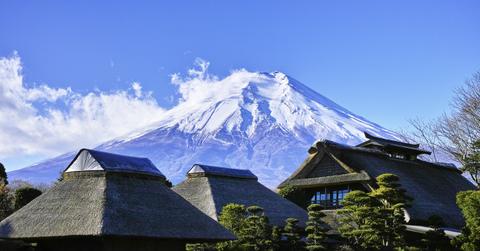Towns In Japan Are Going Off Grid In Transition To Green Energy
In the wake of Fukushima, Japan has slowly by surely revolutionized their energy infrastructure as dozens of towns and cities across the country go off the grid.
Updated May 25 2019, 12:59 a.m. ET
The 2011 tsunami and earthquake that devastated Japan might have a small silver lining after all: In the wake of the disaster, which was made worse by the Fukushima nuclear power meltdown, the country began rethinking its approach to power on a larger scale. And in a massive overhaul, the country has been slowly but surely revolutionizing their energy infrastructure to go off the grid for good.
In the six years since Fukushima, dozens of Japanese towns have decentralized their power generation and storage systems, choosing instead to build independent micro-grids, which make the towns self-reliant and capable of powering themselves for days without the help of the larger grid. These micro-grids are often supported by the country’s National Resilience Program, which had $33.32 billion in funding this year.
“At the time of the Great East Japan earthquake, we couldn’t secure power and had to go through incredible hardships,” Yusuke Atsumi, a manager at HOPE, the utility organization created to manage one town's generation and grid, told Reuters. Under a large-scale power system, he said, a “blackout at one area would lead to wide-scale power outages. But the independent distributed micro-grid can sustain power even if the surrounding area is having a blackout.”
The impetus behind this power revolution is mainly for building back-up plans for cities and towns in the event of another disaster such as Fukushima. But as the program has induced the creation of micro-grids across the country, the government is looking to raise the budget by 24 percent starting in April 2018.
The micro-grids use a distributed generation system, which uses small-scale power generation fueled by natural gas or solar and wind power to generate power on-site. This eliminates the waste and the cost associated with circulating power from a centralized site. Smart energy systems also connect appliances and meters to the Internet to better direct power where and when its needed, making the systems even more efficient.
“We are moving towards a day when we won’t be building large-scale power plants. Instead, we will have distributed power systems, where small power supply systems are in place near the consumption areas,” Takao Kashiwagi, a professor at the International Research Centre for Advanced Energy Systems for Sustainability at the Tokyo Institute of Technology, told Reuters.
